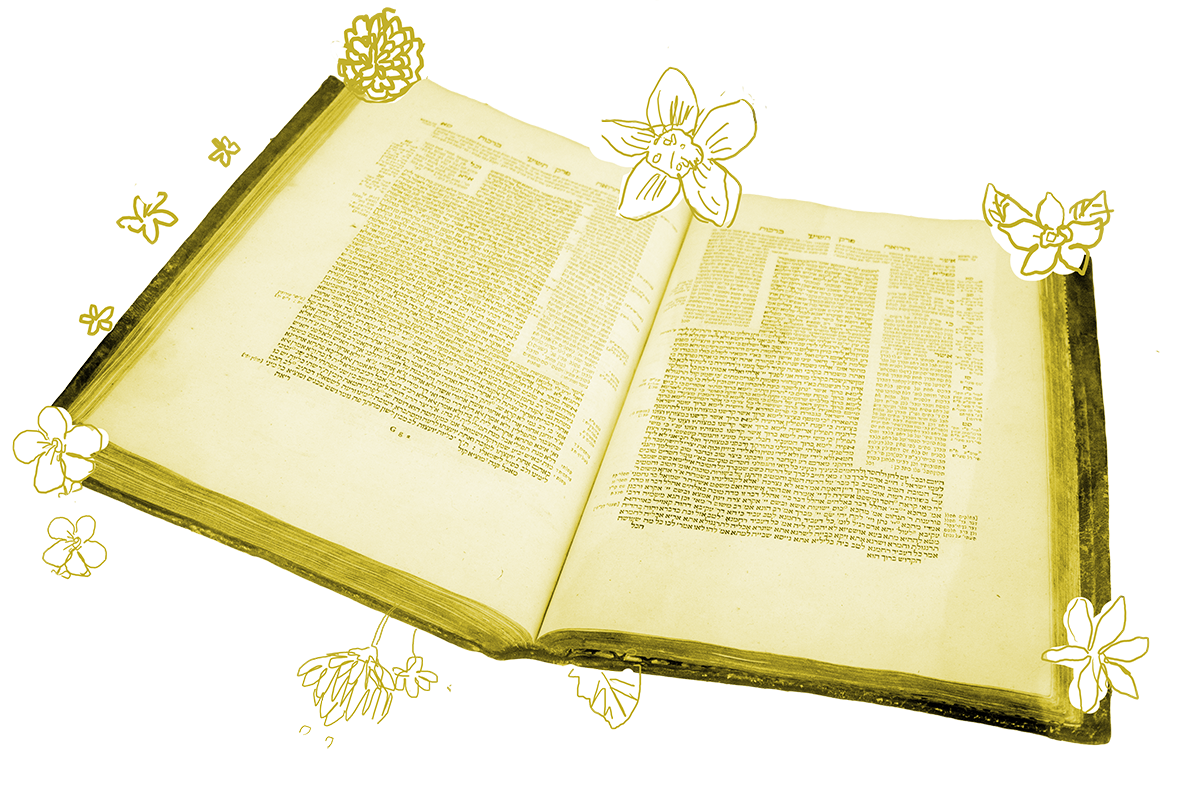Mazal tov! We have made it to the end of Tractate Eruvin which, due to its lengthy discussions of predominantly technical matters, is considered to be one of the most challenging in the entire Talmud.
Eruvin addresses two key elements of Shabbat observance. First, celebration of Shabbat is centered around home and community and so the rabbis limit how far one can travel from one’s residence on Shabbat. This notion emerges from Exodus 16:29, which states “Let everyone remain where they are: let no one leave their place on the seventh day.” Unlike some of their contemporaries who read this verse literally and confined themselves to their homes for Shabbat, the rabbis allow one to travel 2000 cubits (about ½ mile) from one’s residence. In our tractate, we learned about the eruv techumim (joining of boundaries), which allows a person to establish a symbolic residence outside the place where they will sleep and double that distance.
The second element of Shabbat observance that is featured in Tractate Eruvin is the obligation to refrain from working and avoiding the business of the marketplace. For the rabbis, this included not carrying objects from one domain to another, one of the 39 actions that they prohibited on Shabbat. In developing the rules for the eruv chazerot (joining of courtyards) and the shituf mavoi (merging of alleyways) the rabbis sought to protect the prohibition against carrying and manage the complexities of urban development that created shared spaces that were not easily designated public or private domains.
In our day, Jews who observe the laws of eruv look to live in a community that has one. Doing so puts them in walking distance of others and establishes a community with whom they can celebrate Shabbat. For most people, mastering the rules for constructing an eruv, which Eruvin explores in detail, is not a necessity. Unless one is engaged in the construction or maintenance of an eruv, it is sufficient to know that one’s local eruv is functioning.
With your help, My Jewish Learning can provide endless opportunities for learning, connection and discovery.
After completing a tractate devoted to creating such a complex and challenging legal structure, one might conclude that the rabbis were inherently restrictive around eruv. Yet this conclusion is unwarranted, as today’s daf reminds us:
We learned in the mishnah that Rabbi Shimon says: “Wherever the Sages permitted an action to you, they granted you only from your own.”
With regard to Rabbi Shimon, on the basis of what mishnah did he formulate this principle? He taught this principle on the basis of another mishnah, as we learned: “With regard to one for whom it grew dark while he was outside the Shabbat limit, even if he was only one cubit outside the limit he may not enter the town.”
Rabbi Shimon says: Even if he was fifteen cubits outside the limit, he may enter the town, because when the surveyors mark the Shabbat limit, they do not measure precisely. Rather they position the boundary mark within the two thousand cubit limit, because of those who err.
Rabbi Shimon reminds us that in establishing the rules of eruv, the rabbis restored Shabbat privileges to us, reversing more restrictive rules that earlier generations had put in place. To demonstrate what he means, the Gemara brings an example from Eruvin 52, in which Rabbi Shimon allows one who ventures a few steps beyond the Shabbat limit to re-enter town. Rabbis Shimon’s point is that the rules of eruvin, as onerous as they may seem, are meant to enhance our celebration of Shabbat, not limit it.
As we conclude our study, we declare, in the traditional formula: “We will return to you Tractate Eruvin, and you will return to us.” Tomorrow, we turn the page and dive into all things Passover with Tractate Pesachim!
Read all of Eruvin 105 on Sefaria.
This piece originally appeared in a My Jewish Learning Daf Yomi email newsletter sent on November 22nd, 2020. If you are interested in receiving the newsletter, sign up here.



